SR-90 Manual V1.0
GPS Engine Board Manual
SSSSRRRR-90-90-90-90
SiRF StarⅢⅢⅢⅢ
V 1.1
Made in Taiwan
2008/08/08
service@dagamagps.com
www.dagamagps.com
Free service hot-line(for mainland):400-820-1322
�
SR-90 Manual V1.0
Specifications subject to
change without prior notice!
Contents
1. Introduction ……………………………………………………..…………. 2
1.1 Overview …………………………………………………………………. 2
1.2 Features ……………………………………………………………………. 2
2. Technical Specifications …………………………………………………… 2
2.1. Electrical Characteristics…………………………………………………. 2
2.2. Environmental Characteristics……………………………………..……… 3
2.3. Physical Characteristics……………………………………………...…..… 4
Appendix: Software Specifications ……………………………………..
9
1
SR-90 User’s Manual V1.1
�
SR-90 Manual V1.0
1. Introduction
1.1 Overview
SR-90 GPS module is a high performance receiver module for the Global Positioning
System (GPS) solution. It combines SiRF StarⅢ GPS single chip, LNA circuit, SAW filter,
oscillator, crystal and regulators into a land grid array module. The specified firmware is
pre-loaded into the built-in 4-Mbit Flash memory of SR-90 for GPS application. It can be
easily embedded into portable devices for GPS wireless communication.
1.2 Features
SiRF starⅢ high performance GPS Chip Set Very high sensitivity
(Tracking Sensitivity: -159 dBm) Extremely fast TTFF (Time To First
Fix) at low signal level Compact size (25.4mm * 25.4 mm * 3.3mm)
suitable for space-sensitive application One size component, easy
to mount on another PCB board Support NMEA 0183 and SiRF
binary protocol
2. Technical Specifications
2.1. Electrical Characteristics
2.1.1 General
Frequency
C/A code
Channels
2.1.2 Sensitivity
Tracking
2.1.3 Accuracy (Open Sky)
Position
Time
2.1.4 Datum
Default
L1, 1575.42 MHz
1.023 MHz chip rate
20 channels all in view tracking
-159 dBm typical
10 meters, 2D RMS
5 meters 2D RMS, WAAS enabled
1 microsecond synchronized to GPS time
WGS-84
2
SR-90 User’s Manual V1.1
�
SR-90 Manual V1.0
2.1.5 Acquisition Rate (Open Sky)
Hot start
Warm start
Cold start
Reacquisition
1 sec, average
38 sec, average
42 sec, average
0.1 sec, average
2.1.6 Dynamic Conditions
Altitude
Velocity
Acceleration
Jerk
2.1.7 Power
Main power input
Supply Current
2.1.8 Serial Port
Electrical interface
Protocol support
Default NMEA
2.1.9 Time
18,000 meters (60,000 feet) max
515 meters/sec (1000 knots) max
Less than 4 G
20 meters/sec max
3.3 ± 5% VDC input
68mA (Continuous mode)
TTL level
NMEA-0183, SiRF Binary
GGA, GSA, GSV, RMC, (GLL, VTG, and ZDA
optional)
4800 baud rate (other rate optional)
8 bits data, 1 stop bit, no parity.
1 PPS Pulse, pulse duration 1µs.
Time reference at the pulse positive edge.
Synchronized to GPS time, ±1µs.
2.2. Environmental Characteristics
Operating temperature range
Storage temperature range
-40 oC to +85 oC
-45 oC to +100 oC
3
SR-90 User’s Manual V1.1
�
2.3. Physical Characteristics
Top view
SR-90 Manual V1.0
Pin Assignment
Pin
1
2
3
4 5 6 7
8
9
10
11 16
17
18
19
20
21 22
23
24 25 26
27
28 29 30
Signal
Name
VCC
GND
Boot select
RXA TXA
TXB RXB
I/O
I
G
I
Description
DC Supply Voltage input
Ground
Boot mode
I O O I
Serial port A Serial port A Serial port B Serial port B
GPIO14
I/O
General –purpose I/O
RF_ON
GND
GND_A
RF_IN
GND_A
V_ANT_IN
VCC_RF
V_BAT
Reset
GPIO10
GPIO1
GPIO5
GPIO0
GPIO13
G
G
I
G
I
O
I I
I/O
I/O
I/O
I/O
I/O
Digital Ground
Analog Ground
GPS Signal input
Analog Ground
Active Antenna Bias voltage
Supply Antenna Bias voltage
Backup voltage supply Reset (Active low)
General purpose I/O
General purpose I/O General purpose I/O General purpose
I/O (support continuous power mode only)
General purpose I/O
GPIO15
PPS GND
I/O O
G
General purpose I/O One pulse per second Digital Ground
4
SR-90 User’s Manual V1.1
�
SR-90 Manual V1.0
Definition of Pin assignment
VCC
This is the main DC supply for a 3.3V ± 5% DC input power module board.
GND
GND provides the ground for digital part.
Boot select
Set this pin to high for programming flash.
RXA
This is the main receiver channel and is used to receive software commands to the board from SIRFdemo
software or from user written software.PS: Pull up if not used.
RXB
This is the auxiliary receiving channel and is used to input differential corrections to the board to enable
DGPS navigation.PS: Pull up if not used.
TXA
This is the main transmitting channel and is used to output navigation and measurement data to SiRFdemo or
user written software.
TXB
For user’s application (not currently used).
RF_ON
This pin indicates state of RF voltage.
RF_IN
This pin receiver signal of GPS analog .due to the RF characteristics of the signal the design has
to certain criteria. The line on the PCB from theantenna (or antenna connector) has to be a
controlled microstrip line at 50Ω
V_ANT_IN
This pin is reserved an external DC power supply for active antenna. If using 3.0V active antenna, pin 19 has
to be connected to pin 20. If using 3.3V or 12V active antenna, this pin has to be connected to 3.3V or 5Vpower
supply.
VCC_RF
This pin provides DC voltage 3.0 for active antenna. Reset This pin provides an active-low reset input to the
board. It causes the board to reset and start searching for satellites. If not utilized, it may be left open.
PPS
This pin provides one pulse-per-second output from the board, which is synchronized to GPS time. This is
not available in Trickle Power mode.
Backup battery (V_BAT)
5
SR-90 User’s Manual V1.1
�
This is the battery backup input that powers the SRAM and RTC when main power is removed.
Typical current draw is 15uA. Without an external backup battery, the module/engine board will
execute a cold star after every turn on. To achieve the faster start-up offered by a hot or warm start,
a battery backup must be connected. The battery voltage should be between 2.0v and 5.0v. Without
an external backup battery or super cap, the TMP will execute a cold start after every power on. To achieve
SR-90 Manual V1.0
the faster start-up offered by a
hot or warm start, either a battery backup must be connected or a super cap installed. To maximize battery
lifetime, the battery voltage should not exceed the supply voltage and should be between 2.5V and 3.6V.
With the super cap (B1) installed, and after at least ten minutes of continuous operation, the data retention is
about seven hours. Note that even though all other components are rated at –30 to +85 deg C, a typical super
cap is specified over a temperature range of –25 to +70 deg C and a typical rechargeable Lithium battery is
over –20 to +70 deg C.
GPIO Functions
Several I/Os are connected to the digital interface connector or custom applications.
Application Circuit
6
SR-90 User’s Manual V1.1
�
SR-90 Manual V1.0
(1) Ground Planes: SR-90 GPS receiver needs two different ground planes. The
GND_A pin(11、12、13、14、15、16、18) shall be connect to analog ground.
The GND pin(2 、10、30) connect to digital ground.
(2) Serial Interface: The Serial interface pin(RXA 、TX1、TXB 、RXB) is recommended
to pull up(10KΩ).
It can increase the stability of serial data.
(3) Backup Battery:
It’s recommended to connect a backup battery to V_BAT. In order to enable the
warm and hot start features of the GPS receiver. If you don’t intend to use a backup
battery, connect this pin to GND or open. If you use backup battery, shall need to
add a bypassing capacitor (10uF) at V_bat trace. It can reduce noise and increase
the stability.
(4) Antenna:
Connecting to the antenna has to be routed on the PCB. The transmission line must
to controlled impedance to connect RF_IN to the antenna or antenna connector of
your choice.
(5) Active antenna bias voltage:
The Vcc_RF pin (pin 20) is providing voltage 3.3V. If you use active antenna, you
can connect this pin to V_ANT_IN pin (pin 19) to provide bias voltage of active.
Mechanical Layout
7
SR-90 User’s Manual V1.1
�

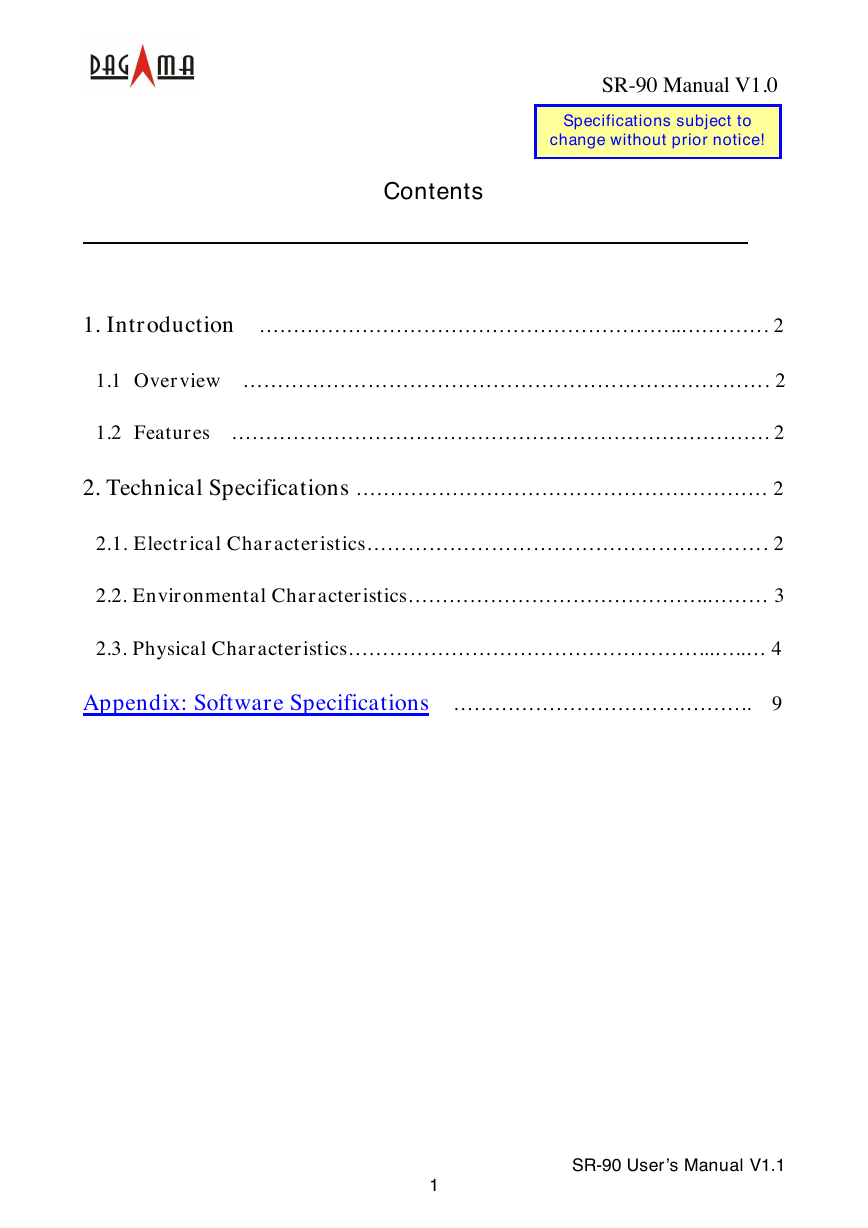
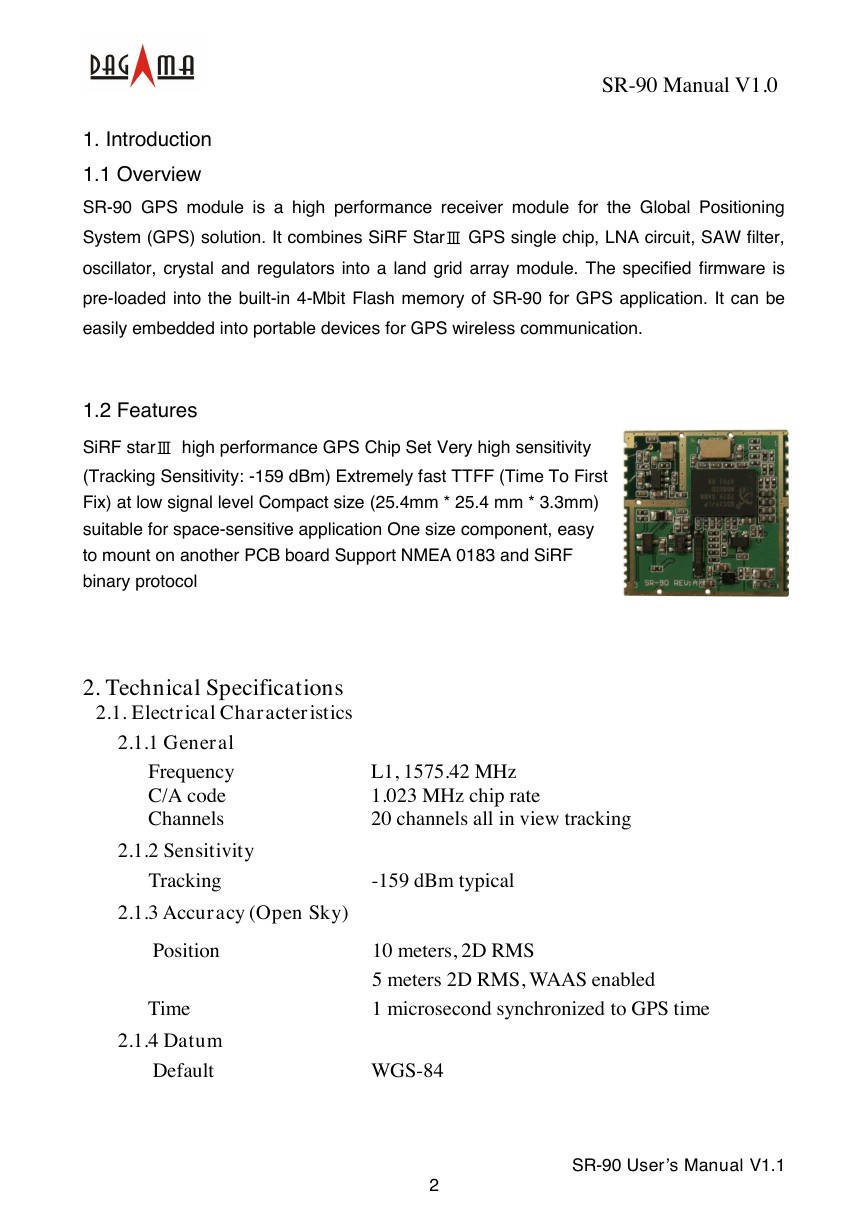
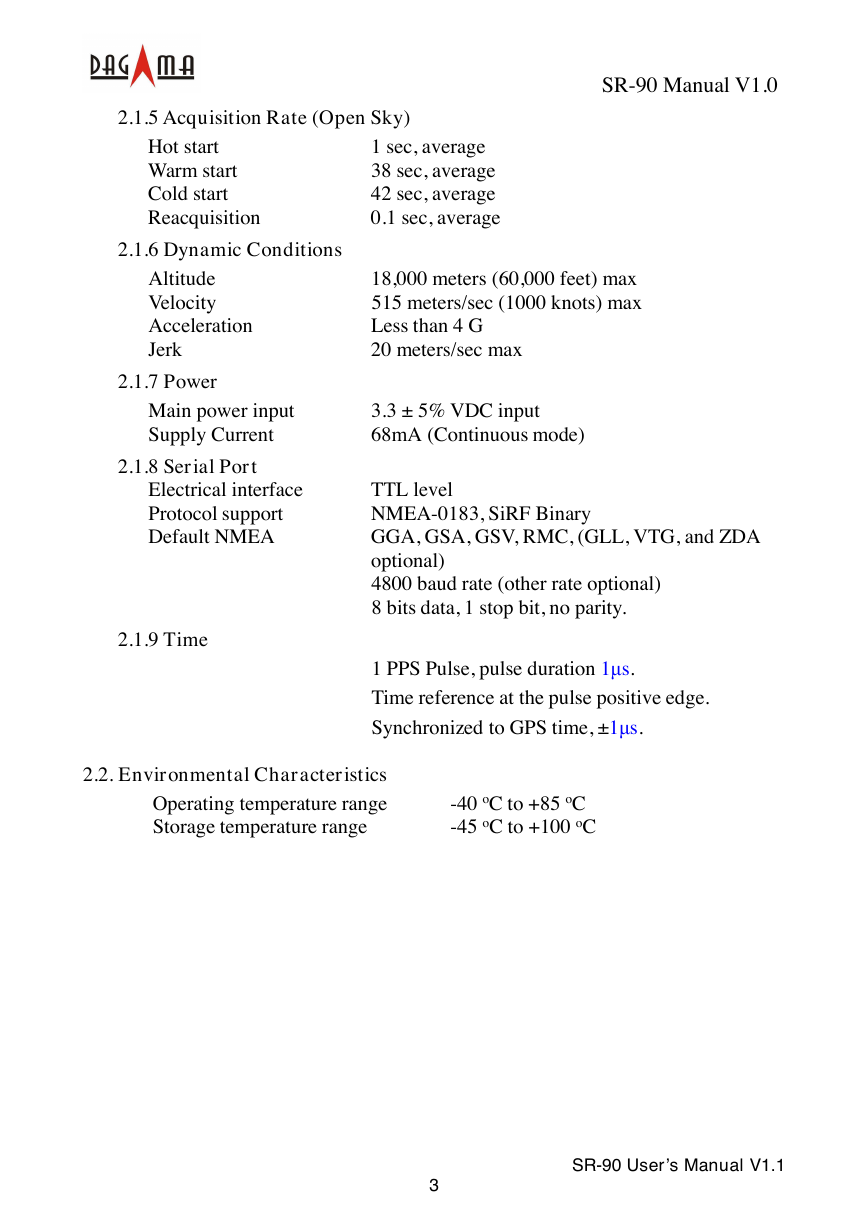
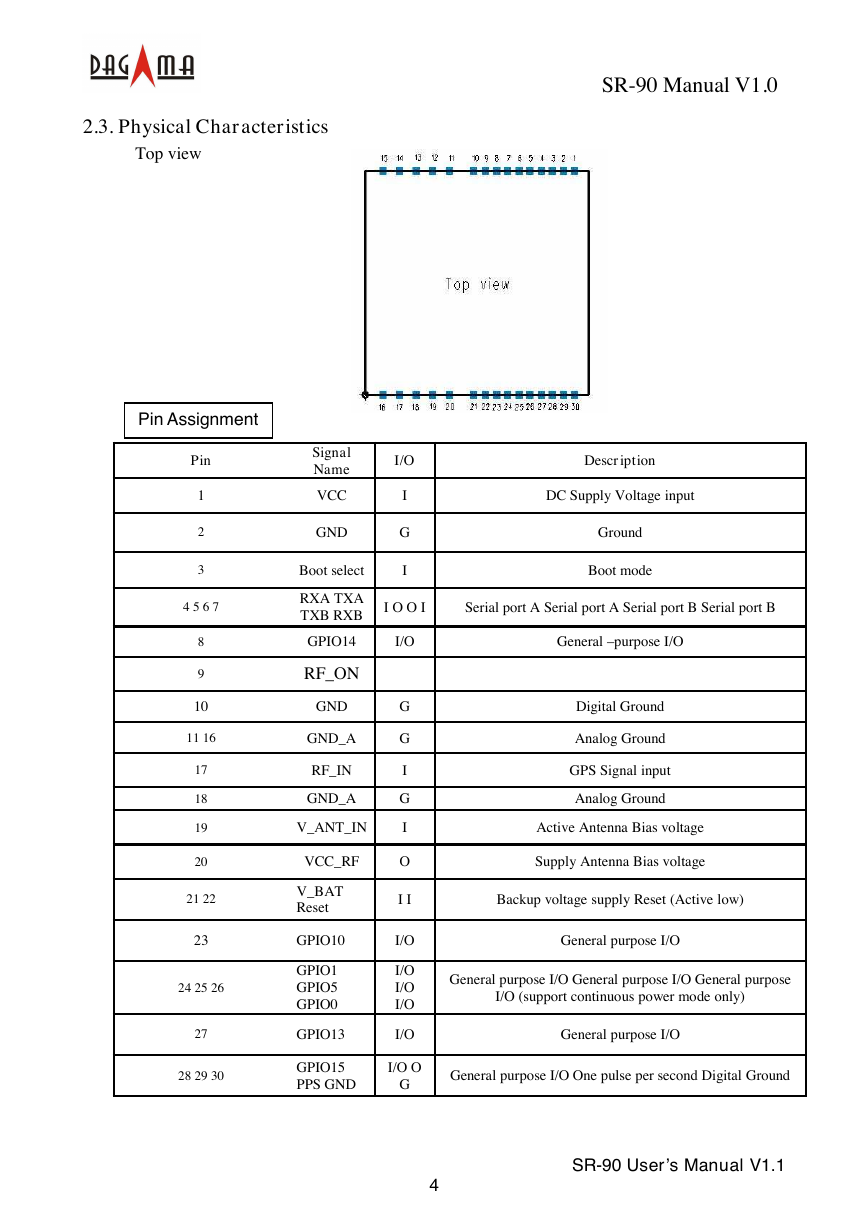
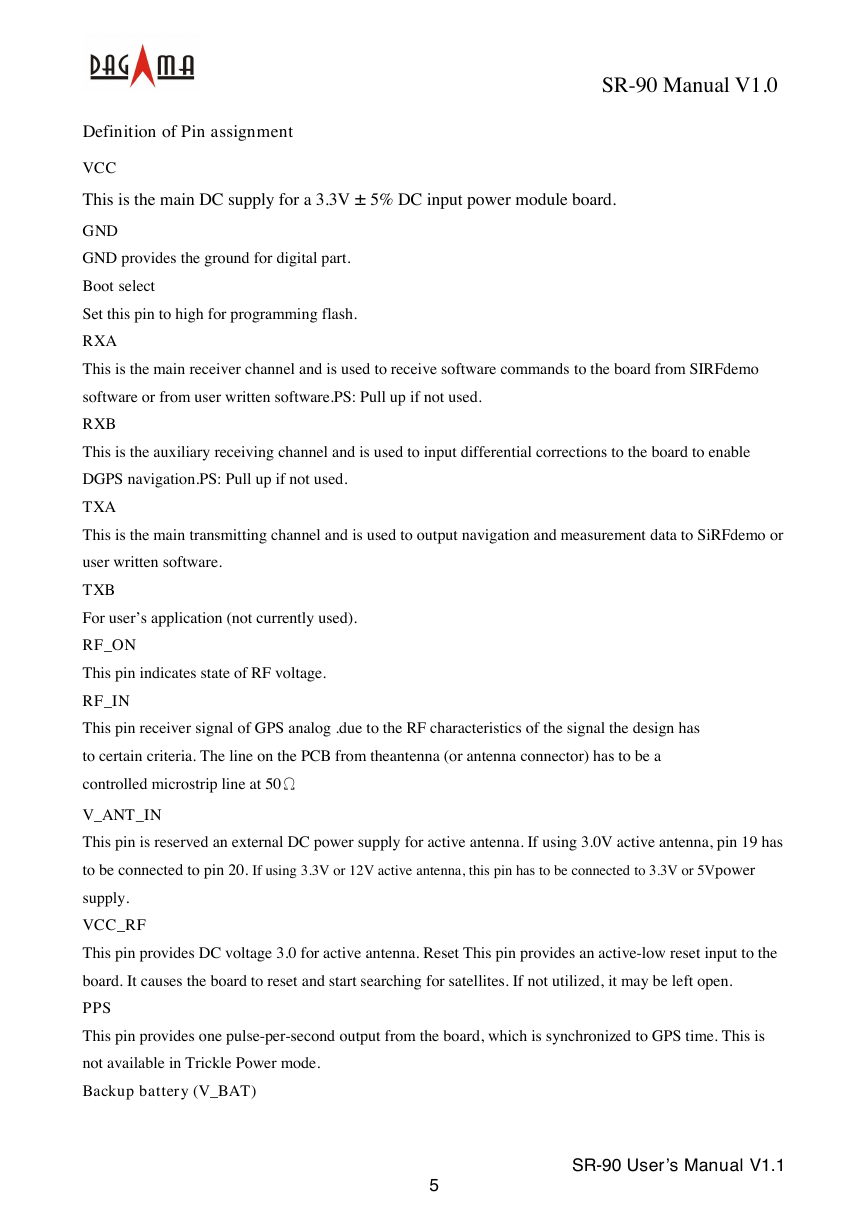
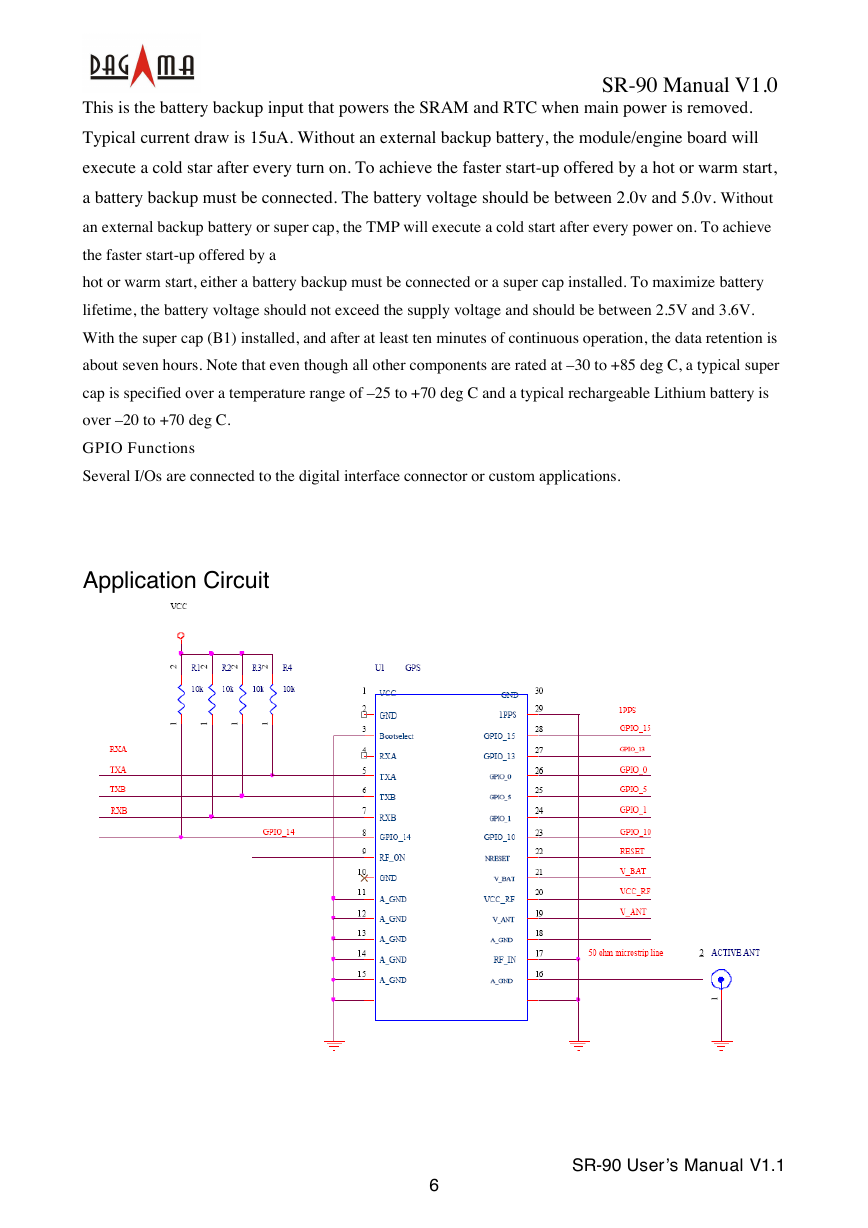
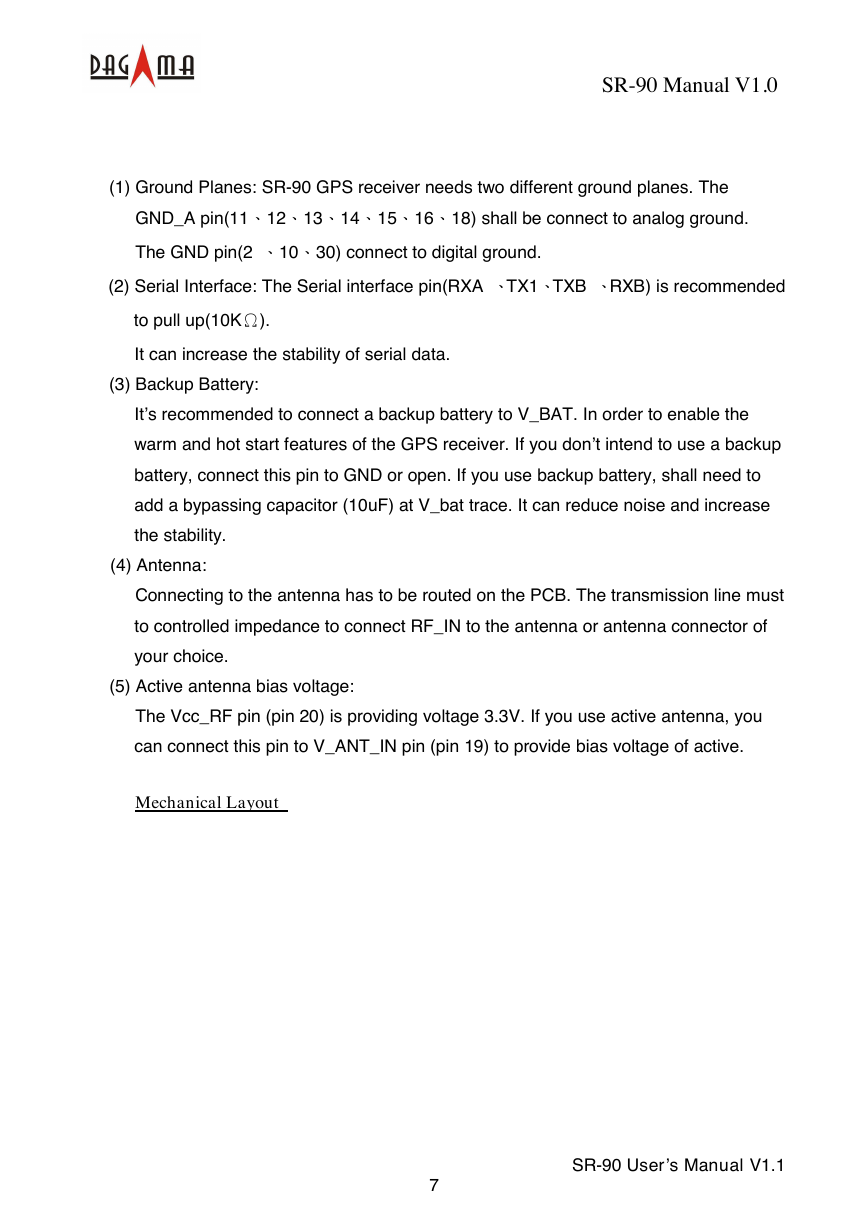








 2023年江西萍乡中考道德与法治真题及答案.doc
2023年江西萍乡中考道德与法治真题及答案.doc 2012年重庆南川中考生物真题及答案.doc
2012年重庆南川中考生物真题及答案.doc 2013年江西师范大学地理学综合及文艺理论基础考研真题.doc
2013年江西师范大学地理学综合及文艺理论基础考研真题.doc 2020年四川甘孜小升初语文真题及答案I卷.doc
2020年四川甘孜小升初语文真题及答案I卷.doc 2020年注册岩土工程师专业基础考试真题及答案.doc
2020年注册岩土工程师专业基础考试真题及答案.doc 2023-2024学年福建省厦门市九年级上学期数学月考试题及答案.doc
2023-2024学年福建省厦门市九年级上学期数学月考试题及答案.doc 2021-2022学年辽宁省沈阳市大东区九年级上学期语文期末试题及答案.doc
2021-2022学年辽宁省沈阳市大东区九年级上学期语文期末试题及答案.doc 2022-2023学年北京东城区初三第一学期物理期末试卷及答案.doc
2022-2023学年北京东城区初三第一学期物理期末试卷及答案.doc 2018上半年江西教师资格初中地理学科知识与教学能力真题及答案.doc
2018上半年江西教师资格初中地理学科知识与教学能力真题及答案.doc 2012年河北国家公务员申论考试真题及答案-省级.doc
2012年河北国家公务员申论考试真题及答案-省级.doc 2020-2021学年江苏省扬州市江都区邵樊片九年级上学期数学第一次质量检测试题及答案.doc
2020-2021学年江苏省扬州市江都区邵樊片九年级上学期数学第一次质量检测试题及答案.doc 2022下半年黑龙江教师资格证中学综合素质真题及答案.doc
2022下半年黑龙江教师资格证中学综合素质真题及答案.doc